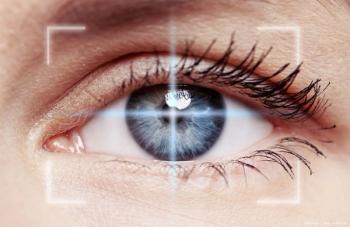
Hair cortisol level as a molecular biomarker in retinitis pigmentosa patients
The research, presented at the 22nd EURETINA World Congress, outlined that patients with RP experience greater levels of stress and anxiety than individuals in the general population and that the level of stress can be measured easily and non-invasively in hair.
The concentration of cortisol in hair may be an effective biomarker associated with chronic stress in patients with retinitis pigmentosa (RP), according to research by Milagros Mateos, MD, and colleagues from the Department of Ophthalmology of Clinical University Hospital of Valladolid and the Institute of Applied Ophthalmobiology at the University of Valladolid in Valladolid, Spain.
The research was presented at the 22nd European Society of Retina Specialists (EURETINA) Congress in Hamburg, Germany.
Mateos and his colleagues explained that patients with RP experience greater levels of stress and anxiety than individuals in the general population and that the level of stress can be measured easily and non-invasively in hair. The stress is associated with the progressive and unpredictable and variable vision loss associated with the disease.
Study of hair samples
Mateos and his conducted a study in which they included 87 patients who were recruited from the Association of RP Patients from Casilla y Leon, Spain, between January 2019 and June 2021. The study also included 148 healthy controls.
All participants underwent an ophthalmologic examination that included clinical, structural, and functional tests, the results of which would be used divide patients by disease severity. An enzyme-linked immunosorbent assay was used to analyze the hair strands, and a questionnaire was administered to measure stress and anxiety levels.
Analysis results of RP by disease severity
The investigators reported that two-thirds of patients with RP had severe disease and the remaining third a mild-moderate stage of disease.
The questionnaire results indicated that 58 (58.9%) patients reported severe stress and anxiety and 18 (23.1%) highly elevated levels.
The patients with RP had higher level of cortisol in the hair samples (2.62 ± 0.14 Log10 pg/mg) compared with the controls (1.99 ± 0.23 Log10 pg/mg; p < 0.001). The patients with severe disease had significantly higher levels of cortisol in their hair than patients with mild-moderate RP, 2.71 ± 0.12 Log10 pg/mg and 2.43 ± 1.17 Log10 pg/mg (p < 0.011), respectively.
In addition, the severely anxious patients obtained a log-hair cortisol concentration that was higher than the patients experiencing less stress, 2.70 ± 0.24 Log10 pg/mg vs. 2.49 ± 0.19 Log10 pg/mg, although, the research team reported, the RP severity grade and perceived anxiety levels in the questionaries were not associated.
“The hair cortisol concentration seems to be an effective biomarker associated with chronic stress in patients with RP,” Mateos and his colleagues concluded. “This study shows that the hair cortisol concentrations in patients with RP are elevated compared to population-based controls, and an association between the concentration level and RP severity was identified. Future research is needed to characterize the effect of this untreated negative psychological states on progression of the disease if any.”
Newsletter
Don’t miss out—get Ophthalmology Times updates on the latest clinical advancements and expert interviews, straight to your inbox.
















































.png)


